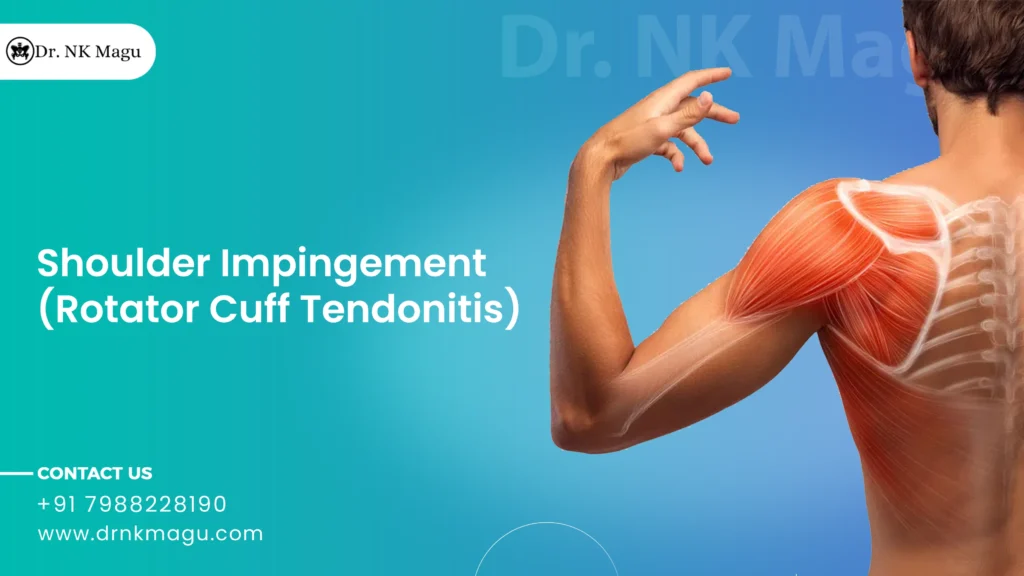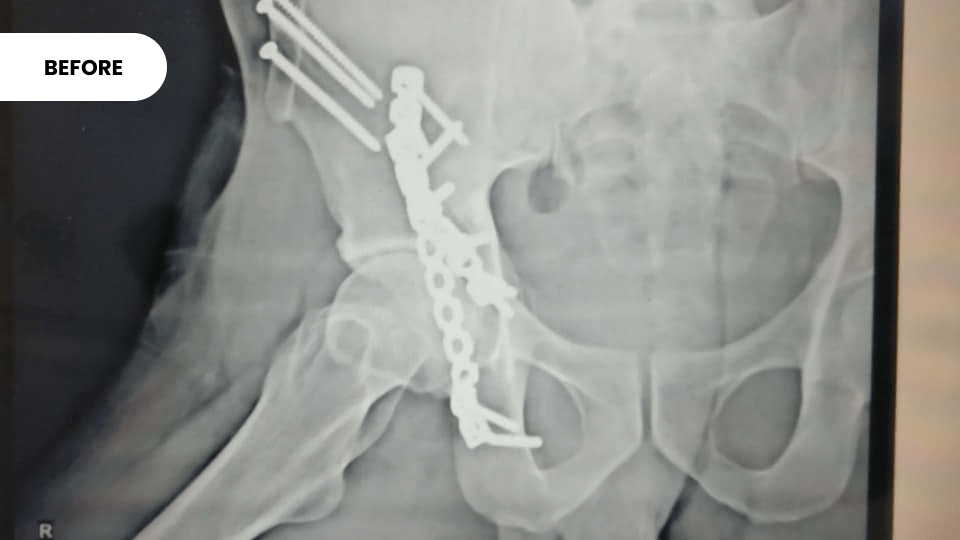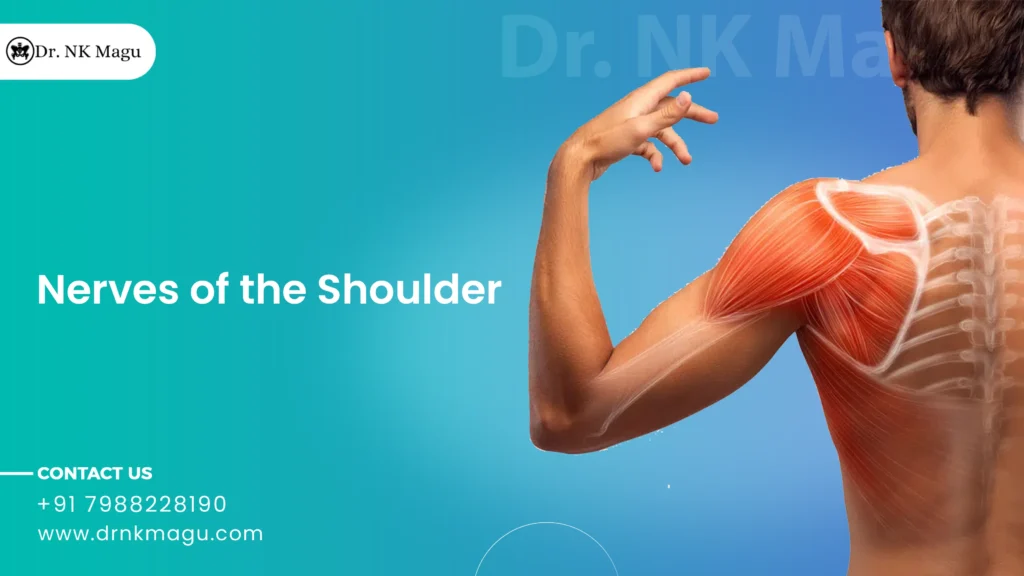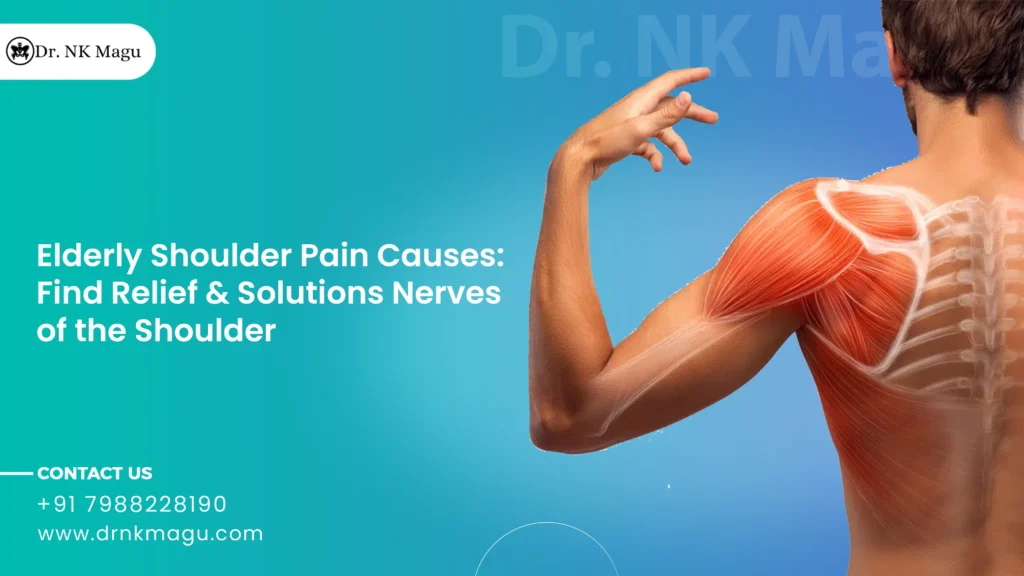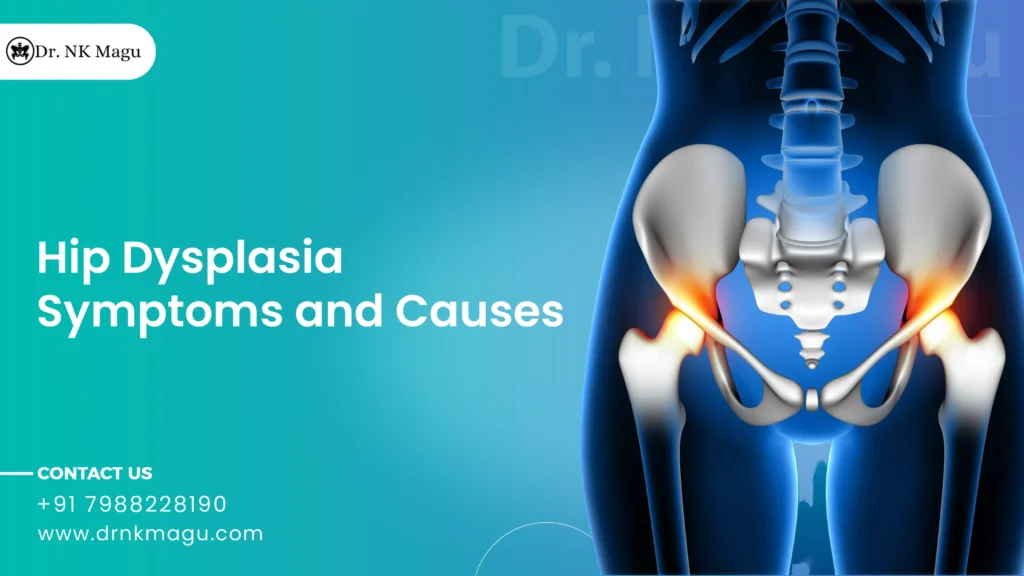Shoulder impingement affects tendons and muscles that help to move the shoulder. Shoulder impingement can be caused by different types related to muscles, like rotator cuff tendinitis, shoulder bursitis, and acromion deformity. It causes pain and inflammation in your affected area, such as around the shoulder.
Through this blog, you get to learn about rotator cuff tendinitis, its causes, symptoms, diagnosis, treatment, and prevention.
What is Rotator Cuff Tendinitis?
Rotator cuff tendinitis is an inflammation or irritation of the tendons that make up the rotator cuff in the shoulder. The rotator cuff comprises of four tendons that support the shoulder muscles and their attachments to the shoulder joints. If your tendons get damaged or irritated, that might result in swelling, ultimately leading to rotator cuff tendinitis. When these tendons become irritated or damaged, they can swell, leading to shoulder impingement. This will lead to pain and limited mobility of movement in the shoulder and can easily be affected by repetitive strain or injury to the shoulder.
What Are The Causes Of Shoulder Impingement?
Rotator cuff tendinitis can occur gradually due to repetitive strain or activities that involve overhead motions. Although it’s more common in athletes, it does occur gradually if you are putting repetitive strain on the shoulder or if you have an injury in the tendon.
Listed here are some of the causes that lead to rotator cuff tendonitis injury:
- Repetitive overhead activities: This is one of the main causes of rotator cuff tendinitis. Individuals who participate in sports that require overhead arm motion, such as swimming, tennis, and baseball, are particularly at risk.
- Sustained shoulder positions: Activities such as working at a computer, hairstyling, or painting frequently require holding the arm in a fixed position for extended periods.
- Anatomical factors: People with loose joints or abnormal bony structures in the shoulder are more prone to developing rotator cuff tendinitis.
- Aging and Degenerative Changes: As individuals age, the tendons of the rotator cuff can undergo degenerative changes that increase the risk of tendinitis.
- Poor posture: Poor posture can cause the shoulder blade to become misaligned, resulting in increased strain on the rotator cuff tendons.
What Are Common Signs And Symptoms?
Below are some of the common signs and symptoms of rotator cuff tendonitis:
- Pain and swelling in your shoulder and side of your arm.
- Stiffness
- Clicking or popping sound while moving the shoulder.
- Skin discoloration or redness in the shoulder and the arm.
- Loss of mobility and strength in the affected arm.
One should keep in mind that not getting treated at the right time and keeping it for a long period will worsen the condition.
What are the Risk Factors Associated With Rotator Cuff Tendintis?
Anyone can be affected by the rotator cuff tendonitis, but athletes and people who do extensive physical work are more prone.
Some sports, if practiced on a daily basis, may impact your shoulder and can be a reason for rotator cuff tendinitis. It includes:
- Baseball
- Tennis
- Volleyball
- Swimming.
Physical work that puts pressure on your shoulder and repeats on a regular basis can also cause rotator cuff tendintis, including:
- Construction
- washing
- Painting.
How Are Rotator Cuff Tendinitis Diagnosed?
To diagnose rotator cuff tendinitis, a healthcare provider will do a comprehensive assessment and a detailed physical examination. In some cases, additional tests may required such as ultrasound, X-ray, and MRI.
How Is Rotator Cuff Tendinitis Treated?
Rotator cuff tendinitis can be treated using non-surgical and surgical treatment methods .
Non-Surgical Treatments:
- Rest: By taking enough rest, you can reduce the shoulder pain. It can be considered a temporary cure, not a permanent one.
- Cold therapy: Apply ice to the affected area as recommended by the doctors.
- Pain relievers: NSAIDs can also be taken to reduce the pain and inflammation around the shoulder.
- Steroid injections: Corticosteroid injections may be recommended by your doctor to reduce pain and get relief for a longer period of time.
- Physical therapy: Certain exercises will be advised by your physiotherapist to strengthen the shoulder muscles and help improve the range of motion in your shoulders. The following exercises are commonly recommended by a physiotherapist for rotator cuff tendinitis rehabilitation.
- Doorway stretch
- Scapular Push-Ups
- Side-lying external rotation
- High-to-low rows
- Reverse fly
- Wall Angels
- Lawn mower pull
- Shoulder abduction.
Surgical Treatment:
When non-surgical treatments are not much effective, then doctors may also recommend surgical treatments for an effective cure from Rotator Cuff Tendinits.
Here are some of the surgical treatments that is used to treat rotator cuff tendnitis:
Arthroscopic Surgery: This is a minimally invasive procedure. A small camera and instrument are inserted into the affected area (shoulder) and make a tiny incision on it. Then, the surgeon repair the damaged rotator cuff tendons with precision.
Benefits: It provides quick recovery, reduces scarring, and affects minimal surrounding tissues.
Open Surgery: This procedure is typically used when one might require extensive repair or when arthroscopic surgery is not very effective.
Benefits: Effective for complex rotator cuff tenditis condition.
Also Read:- Shoulder Replacement Surgery Cost in India
How Is Rotator Cuff Tendonitis Prevented?
To prevent Rotator Cuff Tendintis, certian strategies are always advised to follow, such as exercises to maintain good posture, activity modification, and wearing equipments for your shoulders for sports and other physical work.
If the pain continues for several months after treatment your’e doctor might recommend for surgery. Early diagnosis and prevention is always recommended to maintain a sustainable and easy life.
Top 10 Orthopedic Surgeons in Gurgaon For Orthopedic Surgery
A note from Dr. N.K. Magu
Rotator cuff tendinitis is a common shoulder condition that can significantly impact daily activities. Early intervention is crucial for effective management and prevention of long-term damage. Regular assessments and appropriate treatment, including rest, physical therapy, and pain management, can effectively manage symptoms and restore shoulder function.
FAQ’s
Q: When should I see a doctor for rotator cuff tendinitis?
A: If you are feeling the persistent shoulder pain, limited shoulder mobility, affecting normal activities of your daily living due to shoulder pain, you should consult with your doctor as soon as possible.
Q: How serious is rotator cuff tendinitis?
Rotator cuff tendinitis can range from mild to severe, depending on the extent of the tendon irritation or damage. If it remains untreated, it may worsen your rotator cuff tendonitis condition.
Q: How to tell the difference between rotator cuff tear and tendonitis?
A: A rotator cuff tear occurs due to tearing of the tendon, either acute (due to a sudden injury) or chronic (from long-term wear). It is associated with the sudden and intense pain. On the other hand, rotator cuff tendonitis happens due to inflammation of the tendon. Generally develops gradually over time due to repetitive stress or overuse.
Q: What is the fastest way to heal tendonitis in the shoulder?
A: The fastest way to heal shoulder tendonitis is to rest the shoulder, apply ice, take anti-inflammatory medications, and undergo physical therapy with targeted exercises to reduce inflammation and restore function.
References


